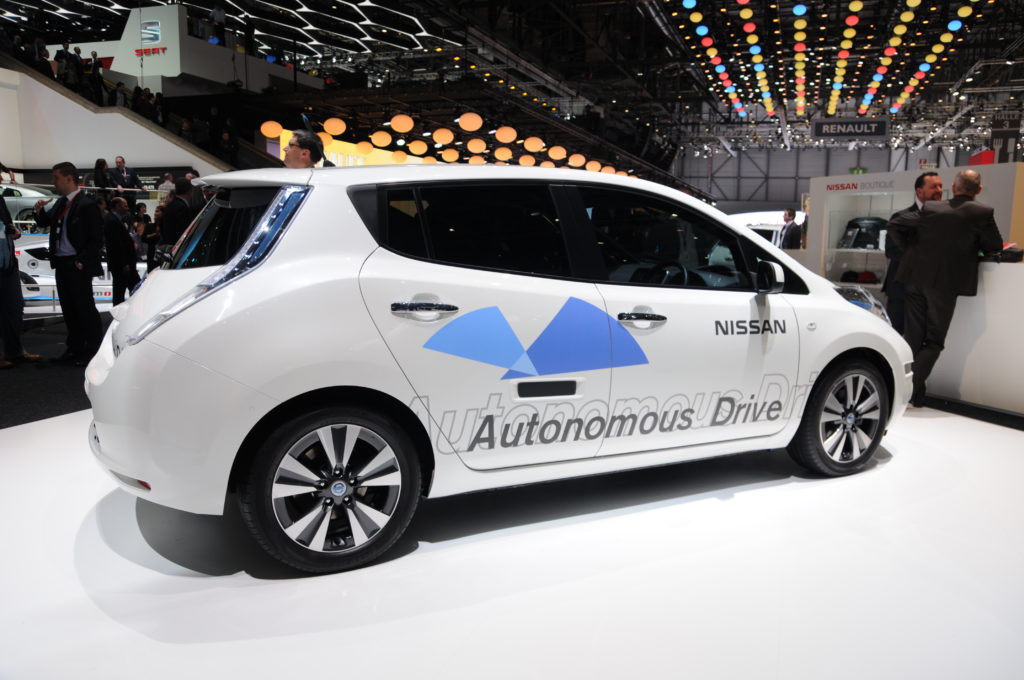
In 1953, Isaac Asimov gave life to Sally, a corvette that could communicate and drive itself. 1968 saw Hal, a highly intelligent computer that could operate a large spaceship in Stanley Kubrick’s 2001 Space Odyssey. Intelligent cars have long been an aspiration and held a seat in our imaginations, and have now become a reality.
Large companies such as Apple, General Motors, and Google are competing to make connected cars, and numerous start-ups such as comma.ai and Nauto are joining the market. Microsoft, Renault, and Nissan just announced a partnership for cloud-based services in cars, and our center is looking towards research and involvement in this field.
So what are connected cars?
Connected cars are automobiles with devices that provide internet access or access to other networks outside the car, and may also contain sensors.1 These in-unit systems allow for infotainment, alerts of safety hazards, assessment of the driver’s ability to operate a car, notifications of when the car will need repairs, more efficient traffic navigation, and perhaps even autonomous or assisted driving.
What are the figures?
According to an article by Forbes, 2013 saw around 23 million connected cars globally in a market of over a billion cars. Analysts project that the connected car market will continue growing, with one report by PwC estimating that revenue will almost quadruple between 2015 and 2020.
Gartner estimates that 20% of vehicles in 2020 will be connected and increase to around 250 million in number. Business Insider estimates that the connected car market is growing ten times as quickly as the overall car market according to its five-year compound annual growth rate.
With increased job growth and vehicle affordability and decreased prices, car sales as a whole have recently improved in the United States, and have seen a 5% rise globally in recent months, and experts are optimistic of growth. If these predictions are correct, connected cars will represent an increasingly prevalent disruption in the global economy.
What are the pros and cons?
Consumers are worried that the increased connectivity that comes with these vehicles will hurt privacy. Others are worried about safety issues from malfunctions and distractions, especially with various self-driving car accidents appearing on the news.
However, many are excited to see more of these cars on the road: the systems will help increase data and consumer analytics, make various mobile and internet features available on the road, improve safety when drivers are impaired or fatigued, decrease traffic, and better the environment through more optimal driving.
How are startups shaping these cars and what is the future?
Nauto, a startup founded in 2015 and based in Palo Alto, focuses on providing safety, network connectivity, and reducing congestion through a cloud system. Automatic, a San Francisco startup, produces adapters that assess whether your car needs repairs or not and sends you alerts through a mobile app, Apple Watch, or bluetooth. Quanergy utilizes 3D sensors to detect objects for safe-driving in hazardous weather conditions in a more affordable way.
Although there are legal questions facing this new market such as privacy laws and responsibility for liabilities, the future remains bright and room for growth is highly fluid. Experts see increased connectivity as goals for companies producing connected cars, with some looking to the possibility of connecting cars with traffic lights to reduce traffic congestion. The market must also figure out how to make connectivity more accessible and affordable: a report by McKinsey shows that while consumers may want a connected car, they are not motivated to pay for it. Most consumers are unlikely to buy new cars often even with useful new features, so the industry may consider creating more attachable features and upgrades.
While widespread usage of truly autonomous vehicles remain distant, connected cars are an exciting opportunity to increase personalization through connectivity and revolutionize the road, and that our center hopes to be part of.
